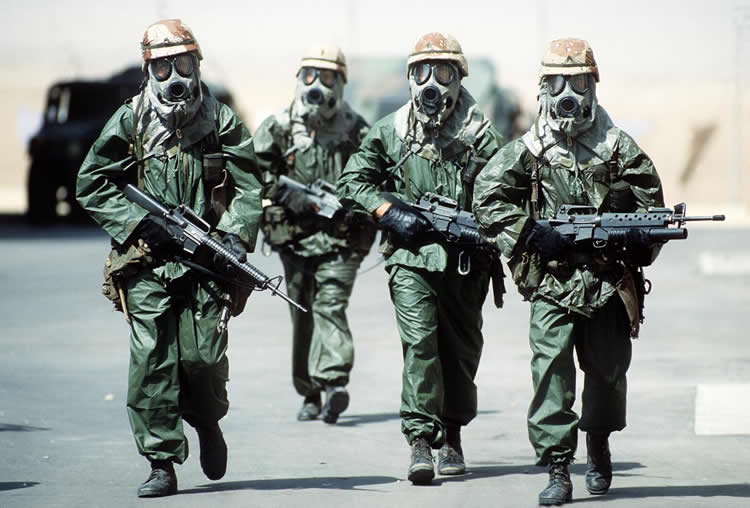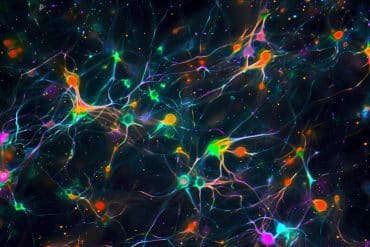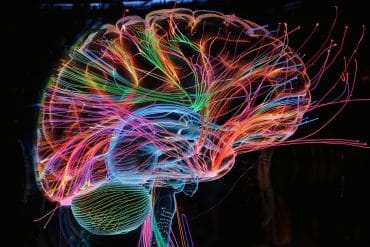Summary: Researchers have developed a panel of blood markers that may diagnose Gulf War illness with 90 percent accuracy.
Source: Veterans Affairs Research Communications.
Based on a study of 85 Gulf War veterans, Veterans Affairs researchers in Minneapolis have developed a tentative panel of blood markers they say can verify a diagnosis of Gulf War Illness with 90 percent accuracy.
The method now needs validation in larger groups of patients, say the researchers.
The findings appeared June 28, 2016, in the journal PLOS ONE. Lead author was Dr. Gerhard Johnson, with VA and the University of Minnesota.
As many as 300,000 veterans–about 4 in 10 of those who deployed to the Persian Gulf during operations Desert Shield and Desert Storm in the early 1990s–are now estimated to have Gulf War Illness, more than 25 years later. That figure comes from a VA survey, based on veterans’ self-reported symptoms, published earlier this year.
But the illness is still difficult to define and diagnose, and there is no broad agreement on the diagnostic criteria, let alone an exact cause. Commonly reported symptoms include pain, fatigue, mental fog, memory problems, headaches, insomnia, and gastrointestinal problems.
Chronic inflammation in the body may be the chief underlying culprit, or at least one of the key factors driving the illness, suggests the new study.
The study found that several commonly used blood tests–all indicating inflammation–tended to yield different results between veterans who reported symptoms consistent with Gulf War Illness, and those who did not.
The researchers suggest that a panel of such markers, once validated in further research, could serve as an objective biomarker for the condition. This could help clinicians diagnose the illness. It could aid further research as well. As of now, different research groups use different criteria for determining who has the condition, and that may hamper progress.
The study involved 57 Gulf War veterans who met the current diagnostic criteria for the illness, and 28 who did not. They were mostly white, male, and middle-aged.
The researchers tested the volunteers’ blood samples for red, white, and platelet counts, and for more than 60 different proteins.
Three types of white blood cells–lymphocytes, monocytes, and neutrophils–were all higher in the Gulf War Illness group. Platelets–small cells that form clots to heal injured blood vessels–were also elevated.
Along with these changes, six different proteins found in the blood showed significantly different values between the two groups. Levels of C-reactive protein, leptin, BDNF, and MMP-9 were higher in the Gulf War Illness group. Levels of two other proteins–MMP-2 and H-FABP–were lower.
Three of the markers used together–lymphocytes, monocytes, and C-reactive protein–yielded a predictive value of 90 percent for those veterans whose probability of Gulf War Illness was 70 percent or more based on clinical interviews. In other words, the test indicated the presence of Gulf War Illness in 90 percent of those who appeared to have the condition based on conventional diagnostic criteria.
Taken together, write the researchers, the results “support the hypothesis that chronic inflammation is a component of the pathophysiology of [Gulf War Illness].”

Dr. Ronald Bach, the senior author on the study, said, “The fact that so many significant blood biomarker differences were detected in a relatively small study supports the conclusion that we are seeing a strong signal of a well-defined chronic inflammatory disease.”
His group is already putting their theory about inflammation to the test. A clinical trial is now underway at the Minneapolis VA Healthcare System to test whether an anti-inflammatory drug–a new delayed-release form of the corticosteroid prednisone–improves health-related quality of life in veterans with Gulf War Illness. The study, projected to be completed in 2020, will involve 100 veterans in all.
“We are trying to translate the blood biomarker fingerprint into an effective evidence-based treatment for Gulf War Illness,” said Bach.
Both the study of biomarkers and the clinical trial are supported by the Department of Defense Congressionally Directed Medical Research Program.
Funding: The US Department of Veterans Affairs, US Department of Defense provided funding for the study.
Source: Ralph Heussner – Veterans Affairs Research Communications
Image Source: This NeuroscienceNews.com image is credited to Staff Sgt. F. Lee Corkran/USAF.
Original Research: Full open access research for “Blood Biomarkers of Chronic Inflammation in Gulf War Illness” by Gerhard J. Johnson, Billie C. S. Slater, Linda A. Leis, Thomas S. Rector, and Ronald R. Bach in PLOS ONE. Published online June 28 2016 doi:10.1371/journal.pone.0157855
[cbtabs][cbtab title=”MLA”]Veterans Affairs Research Communications. “Potential Blood Biomarkers for Gulf War Illness.” NeuroscienceNews. NeuroscienceNews, 11 July 2016.
<https://neurosciencenews.com/biomarker-gulf-war-illness-neurology-4655/>.[/cbtab][cbtab title=”Veterans Affairs Research Communications”]Veterans Affairs Research Communications. (2016, July 11). Potential Blood Biomarkers for Gulf War Illness. NeuroscienceNews. Retrieved July 11, 2016 from https://neurosciencenews.com/biomarker-gulf-war-illness-neurology-4655/[/cbtab][cbtab title=”Chicago”]Veterans Affairs Research Communications. “Potential Blood Biomarkers for Gulf War Illness.” https://neurosciencenews.com/biomarker-gulf-war-illness-neurology-4655/ (accessed July 11, 2016).[/cbtab][/cbtabs]
Abstract
Blood Biomarkers of Chronic Inflammation in Gulf War Illness
Background
More than twenty years following the end of the 1990–1991 Gulf War it is estimated that approximately 300,000 veterans of this conflict suffer from an unexplained chronic, multi-system disorder known as Gulf War Illness (GWI). The etiology of GWI may be exposure to chemical toxins, but it remains only partially defined, and its case definition is based only on symptoms. Objective criteria for the diagnosis of GWI are urgently needed for diagnosis and therapeutic research.
Objective
This study was designed to determine if blood biomarkers could provide objective criteria to assist diagnosis of GWI.
Design
A surveillance study of 85 Gulf War Veteran volunteers identified from the Department of Veterans Affairs Minnesota Gulf War registry was performed. All subjects were deployed to the Gulf War. Fifty seven subjects had GWI defined by CDC criteria, and 28 did not have symptomatic criteria for a diagnosis of GWI. Statistical analyses were performed on peripheral blood counts and assays of 61 plasma proteins using the Mann-Whitney rank sum test to compare biomarker distributions and stepwise logistic regression to formulate a diagnostic model.
Results
Lymphocyte, monocyte, neutrophil, and platelet counts were higher in GWI subjects. Six serum proteins associated with inflammation were significantly different in GWI subjects. A diagnostic model of three biomarkers—lymphocytes, monocytes, and C reactive protein—had a predicted probability of 90% (CI 76–90%) for diagnosing GWI when the probability of having GWI was above 70%.
Significance
The results of the current study indicate that inflammation is a component of the pathobiology of GWI. Analysis of the data resulted in a model utilizing three readily measurable biomarkers that appears to significantly augment the symptom-based case definition of GWI. These new observations are highly relevant to the diagnosis of GWI, and to therapeutic trials.
“Blood Biomarkers of Chronic Inflammation in Gulf War Illness” by Gerhard J. Johnson, Billie C. S. Slater, Linda A. Leis, Thomas S. Rector, and Ronald R. Bach in PLOS ONE. Published online June 28 2016 doi:10.1371/journal.pone.0157855






